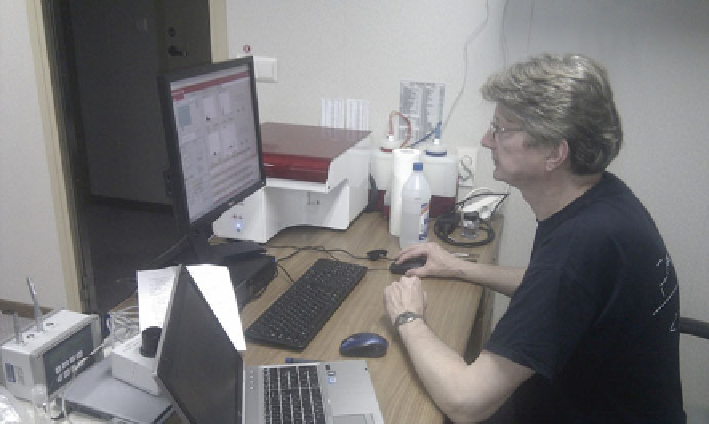Environmental Engineering Reference
In-Depth Information
Fig. 19
On board test of a fl ow cytometer
Calibration
Scientifi c instruments need to be calibrated according to the manufacturers
specifi cations to ensure correct results. After a calibration exercise possible adjust-
ments of the technologies may be needed and much of this work cannot be done in
the fi eld, but requires a laboratory environment. An organism detection method
which needs calibration after each individual use makes it therefore disadvanta-
geous. Such a scenario would not permit to analyse several samples consecutively
in a timely manner and the compliance inspection team would need to bring the
instrument back to a laboratory for calibration after each use.
Time to a Result
At best the organism detection method should deliver prompt results. The sooner the
results are obtained the earlier a potentially non-compliant ballast water discharge can
be stopped or other non-compliance actions can be initiated. It is especially valid for
an indicative sample analysis to reveal a prompt (non-)compliance indication.
Therefore, both the indicative as well as the detailed sample analysis methods
should be chosen in such a way that they deliver results promptly to enable timely
non-compliance response action(s).
A rapid sample processing is also an advantage in cases where PSC is undertaking
the sample analysis on board. Because of all other PSC duties a comprehensive and
lengthy processing procedure of ballast water samples may result in overcommitted
work.

Search WWH ::

Custom Search